Ariel Sinha is a multi-talented illustrator, comedian and musician living in Chicago, Illinois.
Her portraits honoring the lives of Ahmaud Arbery, Breonna Taylor and George Floyd went viral during the Black Lives Matter protests in late Spring, but her dedication to representing ethnicities, body types and marginalized people has been a running theme throughout her career. I spoke with Ariel about art’s role in society at large as well as her life in Chicago and what it means to be a creative in America’s “Second City.”
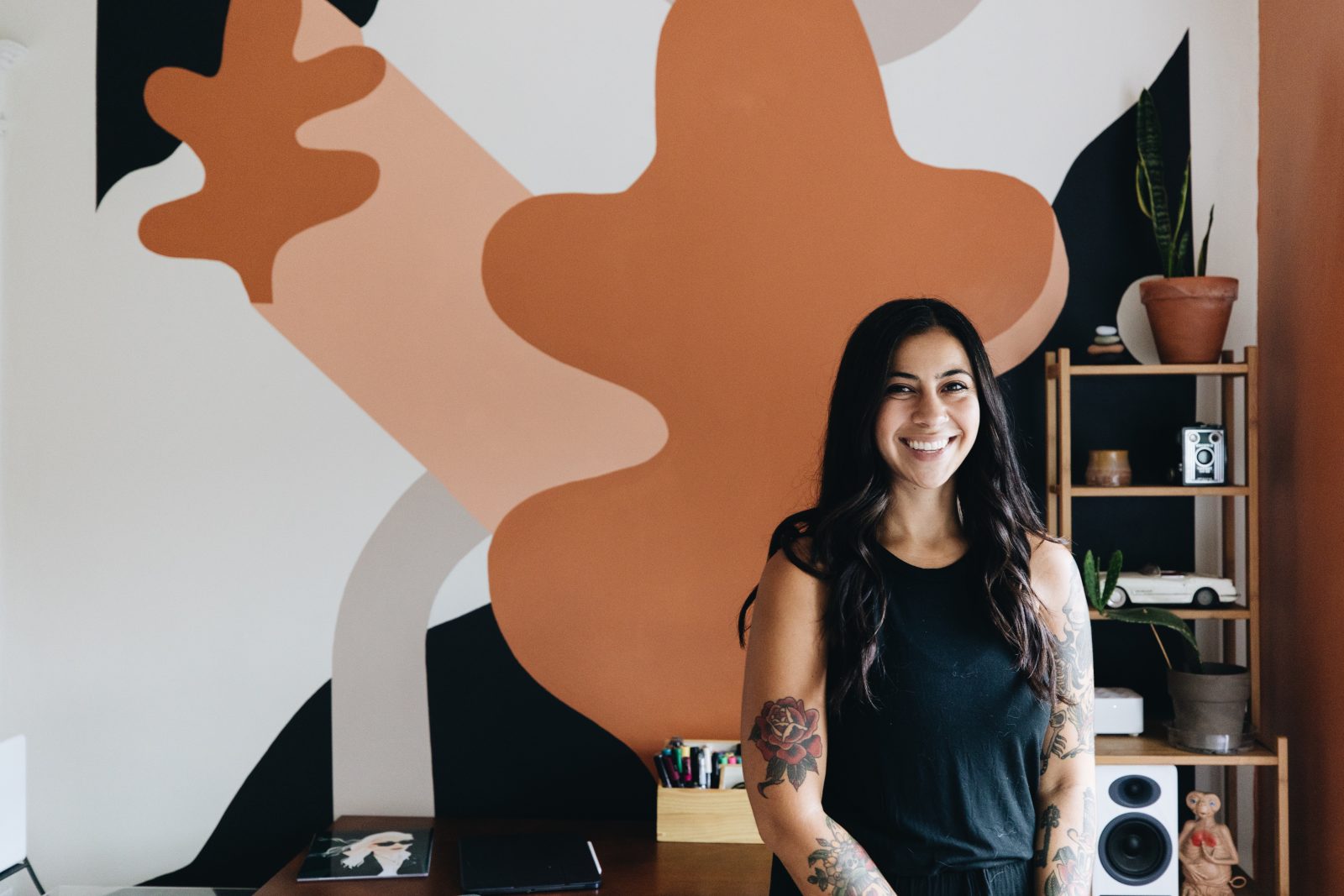
Thanks so much for chatting with me, Ariel, and before we jump in, I was hoping you could introduce yourself and your artistic style.
Sure! My name is Ariel Sinha, and I’m a self-taught illustrator and designer in Chicago. I was born and raised in Kansas City. I never went to art school, but I did get degrees in Public Relations and Women’s Studies from Kansas State University. After college, I spent a couple of years in Omaha, Nebraska before moving to Chicago about four years ago.
I would describe my artistic style as bright and celebratory. In particular, I like to put women and non-binary people at the center of my work and illustrate the beauty and power of representation. Whether it’s representing ethnicities, body types or abilities, I want anyone, especially marginalized folx, to be able to see themselves reflected in my body of work.
I’m always curious how artists hone in on their unique perspectives and voices. Was there anything you can point to that influenced where you are today? How did you arrive upon your signature style?
There’s really no one thing that I can point to—I think the key for me has been perseverance. When I’ve felt discouraged or directionless in my work, it’s been best for me to not sit in the feeling of failure or let it halt my progress but instead just move onto the next thing. And the “what is my style/what do I want to say/how do I want people to feel?” kind of artistic self-discovery journey is on-going.
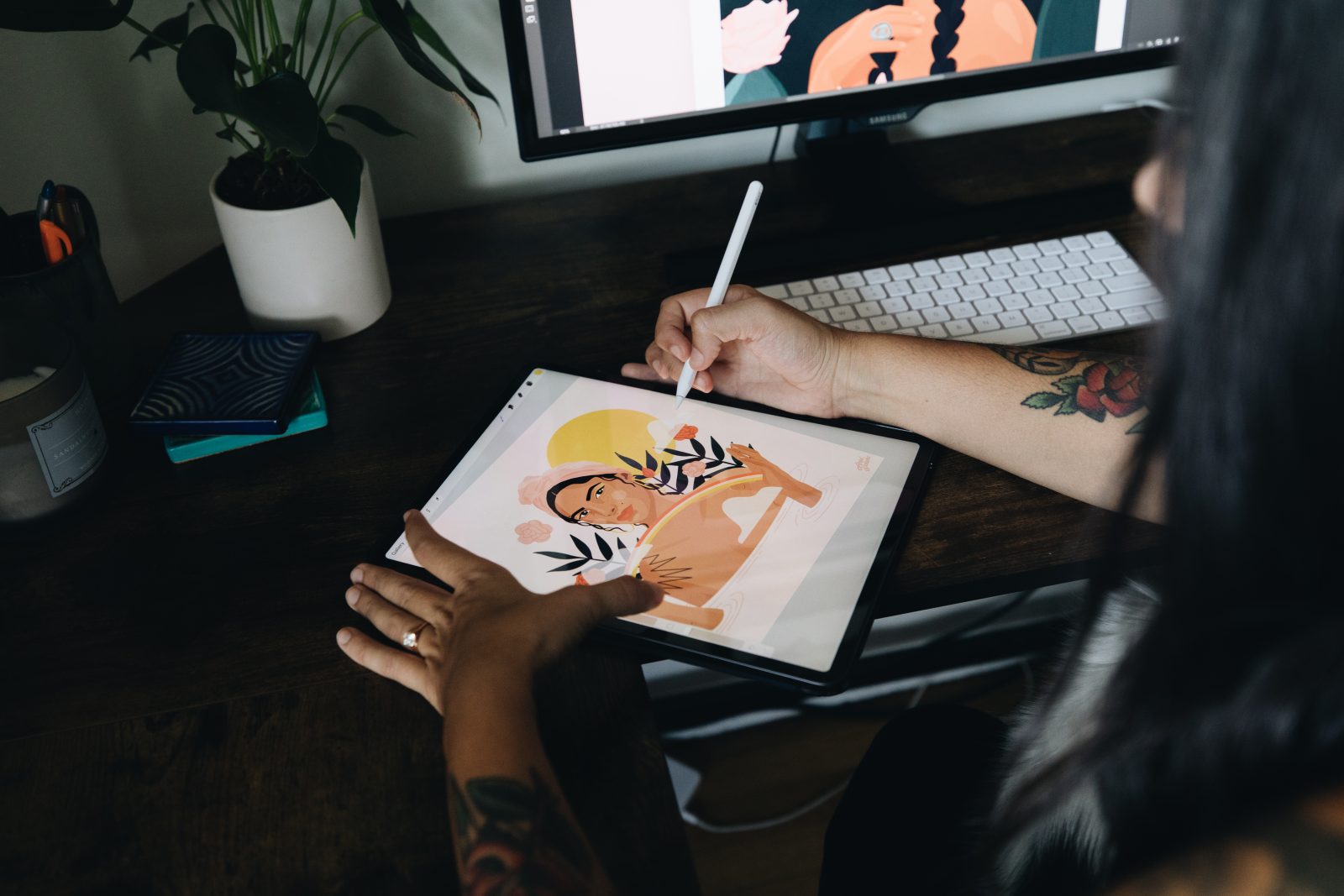
You’re highlighted in our Chicago local artist series, and I was hoping you could speak more about the Chicago arts scene. What’s your experience been living and creating in Chicago?
Oh man—the Chicago art scene is massive and diverse and exciting and intimidating. There are so many talented people in this city, and we’ve got that Midwestern hustle, so whether it’s art, music, comedy or theater, we’re just always working on something. I mean, we have to. We spend 6 months of the year hiding from the sub-zero temperatures with nothing else to do BUT cook up ways to express ourselves.
What I love about Chicago is that even if you’re not really plugged into the scene, art is still in your face. It’s such a colorful city! There’s street art and murals everywhere. There are galleries and art fairs in every neighborhood. The Art Institute of Chicago is—in my opinion—the best art museum in the Midwest. It’s an inspiring city to create in, but because of how saturated and lively the scene is, it can be a bit intimidating to try and wedge your way in when you’re a transplant like me.
Being from Chicago myself… I (with no bias WHATSOEVER) completely agree about the Art Institute. For those who haven’t been, it’s truly a gem, and it gets slept on quite a bit. What are your favorite go-tos at the Art Institute? Any exhibits you come back to over and over?
So many favorites, but every time I go, I have to spin through the Impressionist wing. George Seurat’s A Sunday on La Grande Jatte is a favorite. I mean, we have a room full of Monets. A room full of Van Goghs. It’s incredible. American Gothic is at the Art Institute, Edward Hopper’s Nighthawks. Going to the Art Institute feels like visiting old friends.
Chicago often gets passed over in people’s minds as The Second City, but, as a resident, pitch us as to why it maybe gets an unfair rap. What brought you to Chicago in the first place?
Before I lived here, Chicago was one of the few cities I would visit and just feel at home. It’s a really balanced city. You can find excitement when you want it and quiet when you need it. The people are interesting, yet down-to-earth. Yeah, winters are harsh, but the city comes alive in the summer, and by the time you get there, you love it more because you feel like you earned it.
I moved to Chicago because I wanted access to the lifestyle perks and career opportunities that come with a big city. But I also wanted to continue to study and perform comedy, particularly improvisational comedy, and where better to study that than where it was invented?
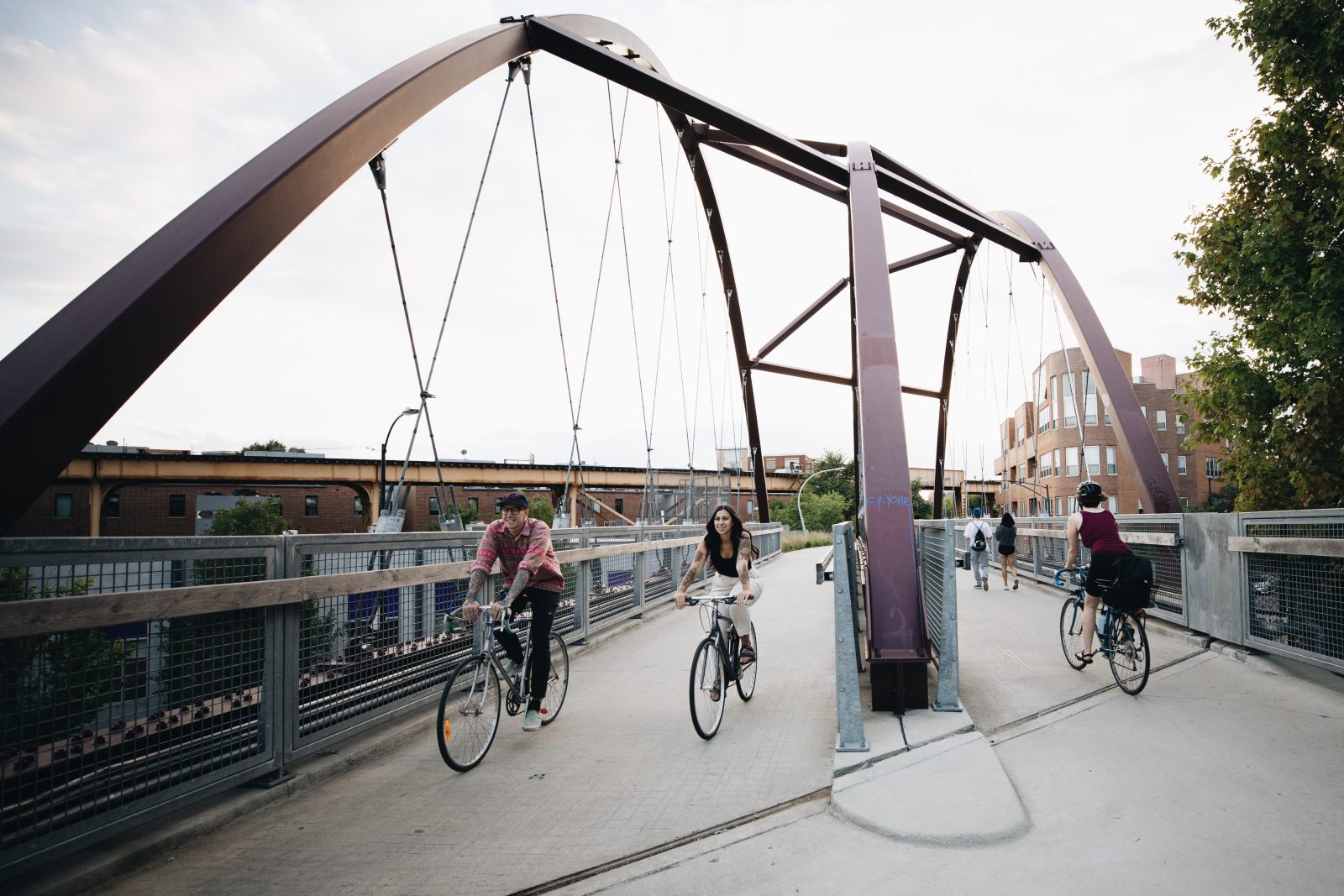
We’ll definitely circle back on the comedy because I think that’s such a great tidbit that rounds out the picture of you. But just for fun, imagine you’ve got a friend coming who’s never been to the city; what are three places you’d have to take them to?
I’m imagining this scenario in the pre-COVID “before times.” Of course, the Art Institute is on the list, but I also love to take visitors to my favorite neighborhoods to get a taste of what it feels like to live here. I lived in Logan Square for a few years, and it’s still one of my favorite neighborhoods. We’d hang out at the monument, get lunch at Same Day Café, walk through all the little shops or see a movie at a great vintage movie theater called Logan Theater. Chicago is also a great biking city, so we’d have to take a bike ride to the lake or on the 606 and stop at a hot dog stand.
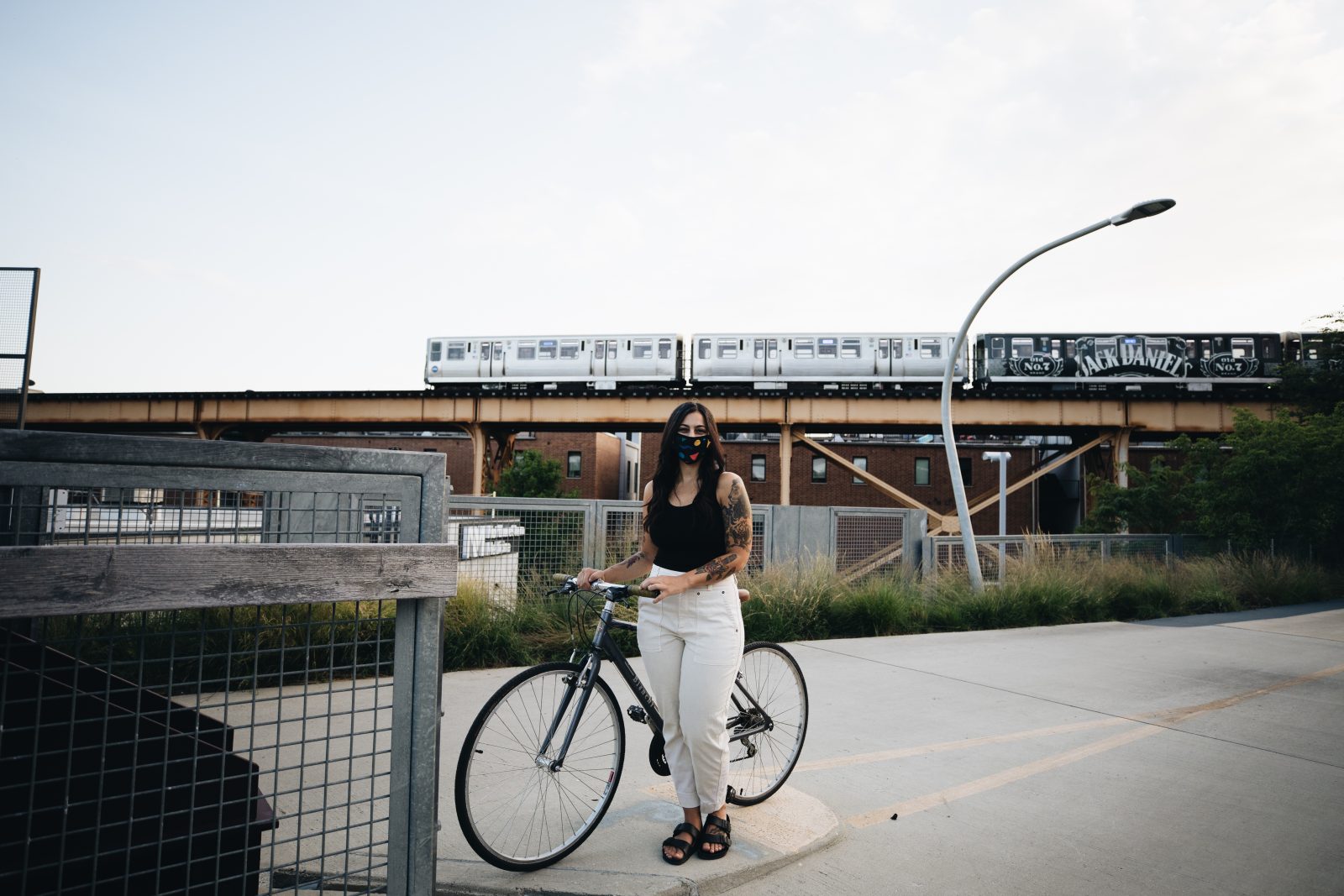
Thinking more about your desire to represent marginalized communities with your artwork, what do you think art’s place is in society at large?
I think that the place of art in society today is where it has always been: in the hearts, eyes and minds of both the makers and the receivers. Physical art, like all art forms, is uniquely capable of conveying both quick and clear meanings as well as the elusive, just out of reach meanings of creation, perception and imagination. Great art can take us by the hand and lead us to new places we didn’t even know were there.
Your work has gone viral in conjunction with the last few months of Black Lives Matter protests—could you speak about what that experience has been like?
I sort of have mixed feelings about it. It’s been incredibly meaningful to me to have been able to contribute to the movement in this way. When I created those pieces, I really just needed an outlet to express my own grief and anger, and I had no idea that the work would resonate with people like it did. And of course, it’s surreal to see celebrities sharing it and the jump in followers and job opportunities that comes with that kind of exposure, but I do wish it wasn’t under such circumstances.
Could you tell us about the creation and inspiration behind those pieces?
I first illustrated portraits of Ahmaud Arbery, Breonna Taylor and George Floyd to honor their lives and share their stories. I didn’t want their legacies reduced to or defined by the violence of their deaths, but instead by the beauty of their lives, so I chose vibrant colors and peaceful flowers—and I chose to draw them with their eyes open, looking straight at the viewer as if to say, “Look at me. Look me in the eye. I’m not a symbol or a statistic. I was a human being with a family and a future, and that was taken away from me.”
My hope was that this approach would resonate with those grieving and processing. Above all, I did these pieces as a way to contribute to the effort of seeking some semblance of justice for their families. I wanted to create something beautiful and shareable that anyone could use on their own platform to raise awareness and encourage action in their communities.
You certainly succeeded in that—the reaction has been so positive, and I think part of why it connected with so many is because of the care, thought and authenticity your work exudes.
Pivoting a bit to your artwork as a whole, who are some influential artists in your work?
My partner Ziggy is a collage artist, and he swears that his work isn’t “marketable,” but I think it’s incredibly brilliant, and I am continually inspired by the way he works with color and composition using entirely found materials. He’s also constantly making me stop and wait for him while he takes a photo of a rusty lock or a cool vintage storefront sign. He just sees details in the world that most people overlook, and that has definitely rubbed off on me and influenced my work.

Do you two work together at all? What’s your creative relationship like?
We’ve talked a few times about collaborating on projects, but haven’t really done that yet. We mostly just support each other and allow space for the other to do their own thing. We do have specified art nights a couple times a week in our house where we work on our own projects in the same room and take turns picking out records to put on.
Now, I said I’d circle back to this—but you’re also pursuing a career in comedy and music, so I’m curious, what is that balance like?
Haha—every year as I get older, I keep thinking, “OK, maybe this will be the year that I stop doing comedy!” But I just can’t quit! I love it too much. I am definitely a hobby comedian—I’m under no illusion that I could make a career out of it, and I don’t work hard enough at it to do so. But having it as a hobby is very fun and fulfilling for me.
Before lockdown, I was performing mostly improvisational comedy 3 to 4 nights a week and having a blast. I know it’s going to look way different when we’re able to have live performances again, but I’ll be really thrilled to get back to it.
And music is more of a past life for me now. When I lived in Omaha, I performed in a funk band called A Ferocious Jungle Cat, and it was probably the most fun I’ve ever had in my life. Now that I’m in Chicago, I still play guitar and write music privately, but rarely perform anymore.
If you couldn’t work in art/music/comedy, what would you want to do?
I think owning a small event space in Chicago would be really cool. I’d love to host art shows and performances.
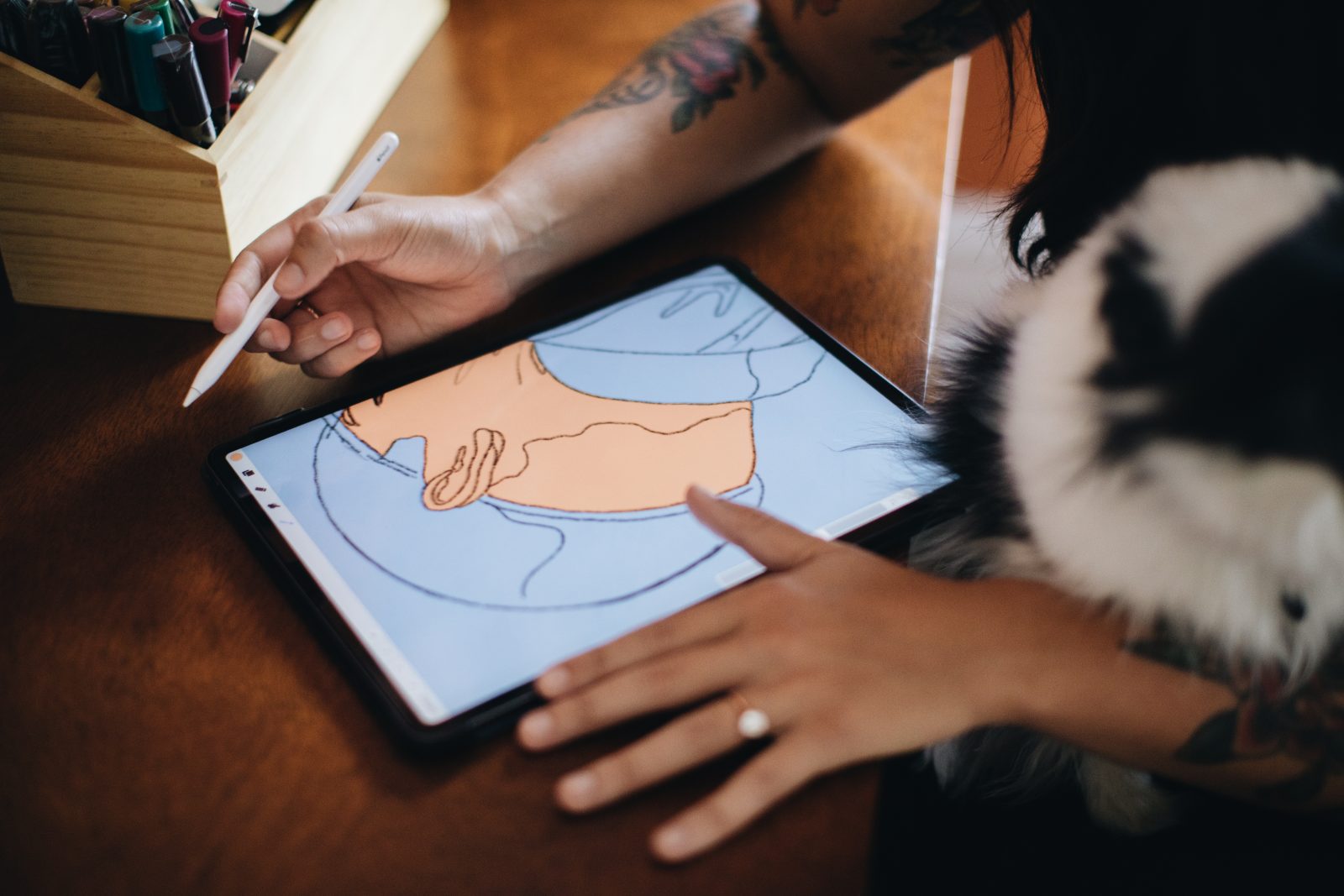
Complete this thought… In ten years, I hope to be doing ____
I hope to be working for myself. Right now, I work full-time as a UI designer at an agency, and I love my job. But I also work basically a second full-time job freelancing and doing independent projects outside of my 9-to-5. I’d like to build my clientele and passive income streams so that I can eventually work only as an independent artist.
Who would your dream client be?
I’d love to work with the ACLU or progressive political campaigns. Ideological alignment and working with activist groups looking out for the greater good sounds pretty awesome.
Thank you again Ariel for sharing your work and stories with us. It’s been a pleasure to meet the person behind the pieces we all recognized from our feeds, and it’s great to see that your approach to art resonates so deeply with us all.
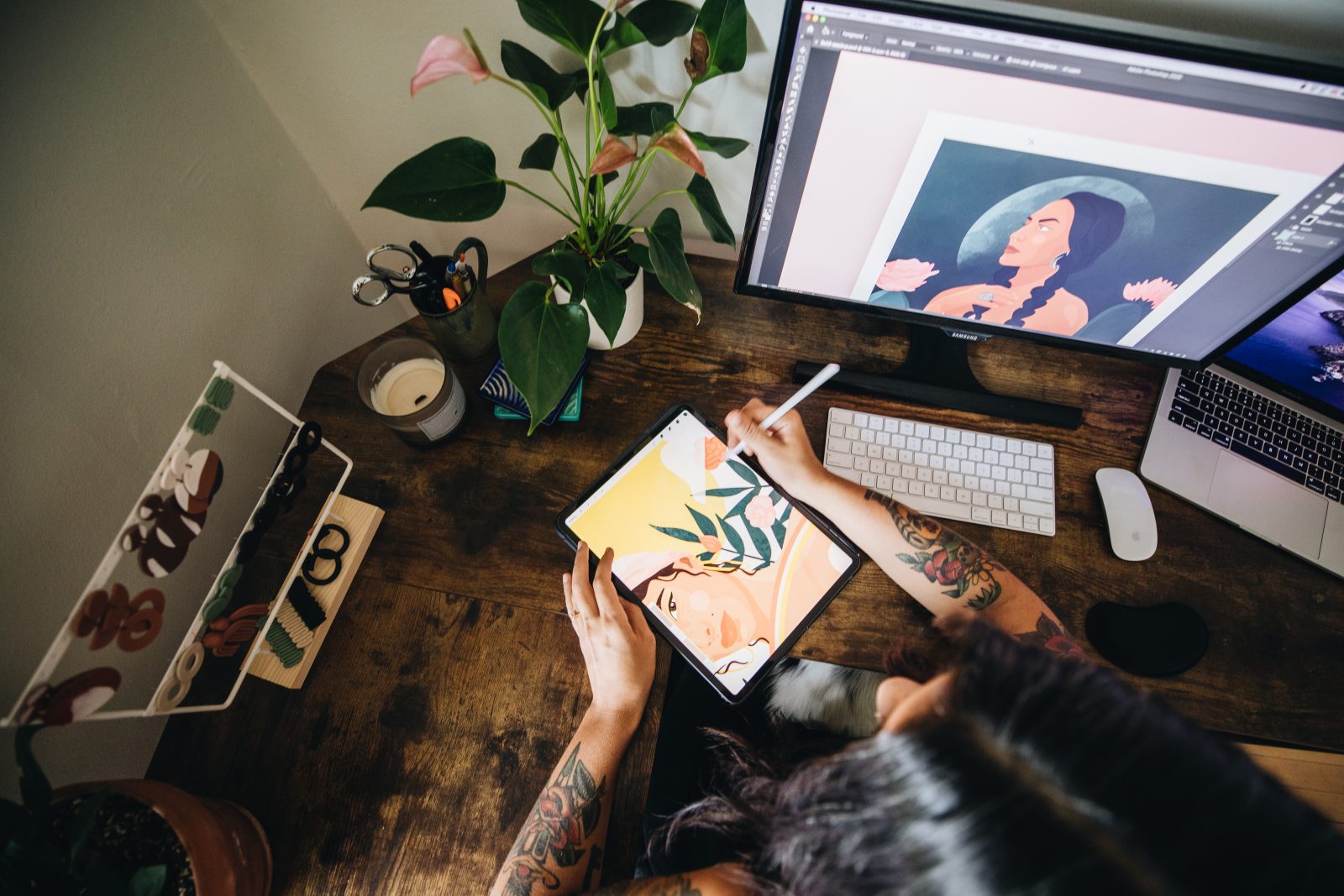
Photography by Azuree Wiitala
Comments